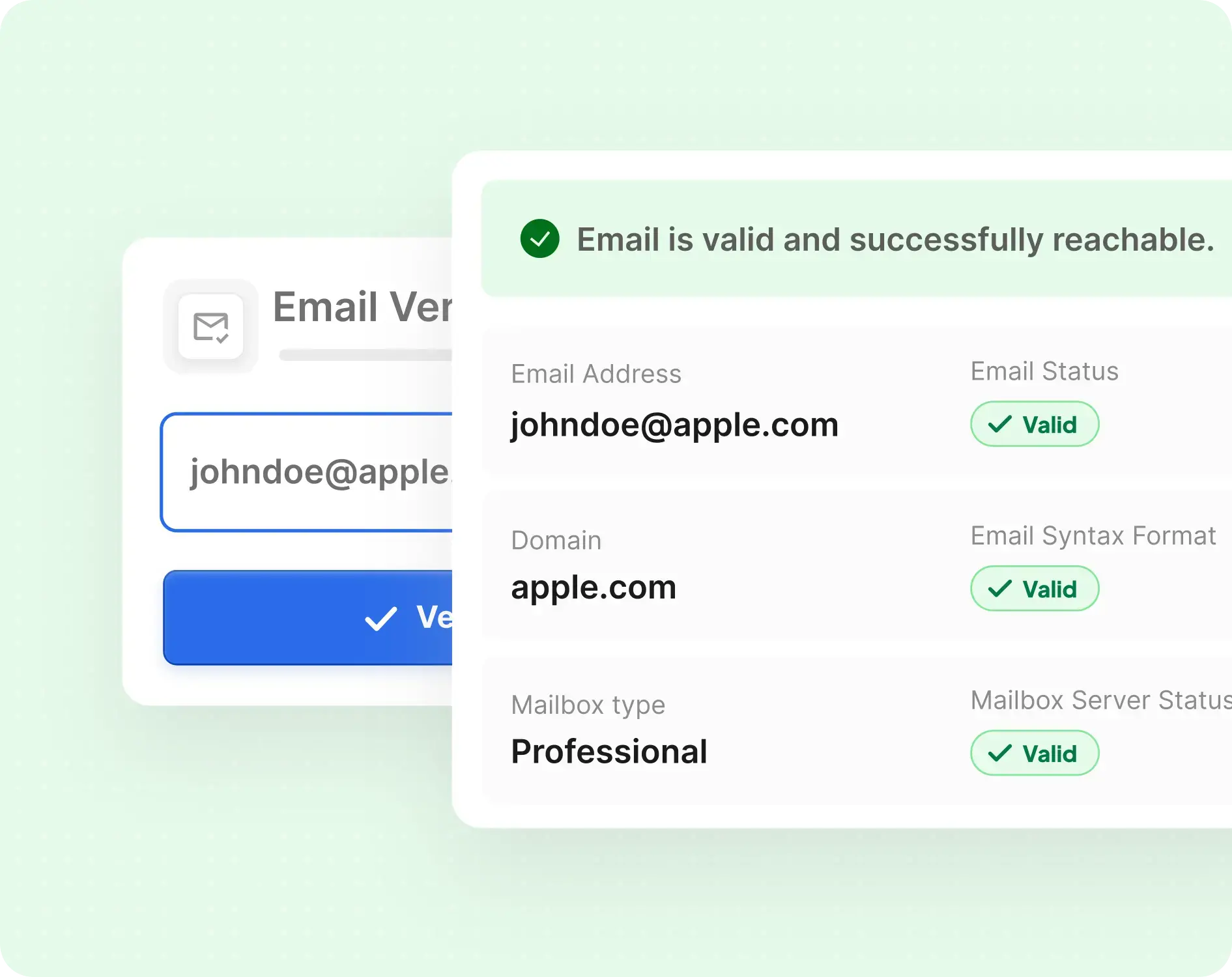How to Find a Hiring Manager's Email in 2025

How to find hiring manager email fast? Start by skipping what doesn’t work.
75% of job applications are never read. Most people submit through generic job portals and wait—while no one sees them. Reaching the hiring manager directly is faster, more effective, and shows real initiative.
When you send a short, relevant email to the person making the decision, you increase your odds of getting noticed—without needing a referral.
Finding those emails doesn’t take hours. You don’t have to guess. Tools like Skrapp.io help you find verified hiring manager emails on LinkedIn in just a few clicks.
This guide shares 6 practical, proven ways to find hiring manager emails—and how to use them to improve your chances of getting a reply.
Why You Should Email the Hiring Manager

You might think submitting your application through standard channels is the simplest option. But reaching out to hiring managers directly gives you key advantages that can change your job search outcomes.
It helps bypass applicant tracking systems
Most companies use automated filters before a human even sees your application. Nearly all Fortune 500 companies (97.4%) use Applicant Tracking Systems (ATS), and 58% use AI to screen resumes. That means many qualified candidates get rejected before their application reaches a real person.
Instead of trying to game these systems with keywords, you can skip them entirely. Sending your resume straight to a hiring manager creates a direct path—one that doesn’t rely on algorithms. One hiring manager even said, "Thanks for saving me the time of not having to go through resumes."
Sending your resume directly also serves as a backup in case the ATS misplaces or flags it incorrectly. This two-step method gives your application better visibility.
You can personalize your message
Generic applications often get ignored. Personalized communication, on the other hand, stands out. Studies show that 75% of candidates respond more positively to job offers that include tailored communication—and the same applies when you're applying.
Direct outreach gives you a chance to write a message that speaks directly to:
- The company’s current goals
- The hiring manager’s background
- Recent news or updates about the company
- Key requirements from the job description
This shows you’ve done your homework and aren’t just sending the same resume everywhere.
It shows initiative and interest
Emailing a hiring manager shows you’re proactive. It signals that you're not waiting around—you’re taking steps to be noticed.
This level of effort shows employers you’ll take ownership in your role. One expert put it clearly: "When you contact the hiring manager, you show not only initiative but also interest. This is also a chance to showcase your good communication skills."
Even if this job doesn’t work out, making direct contact could open doors for future opportunities. That kind of connection sticks.
Absolutely—and in many cases, it’s the move that makes the difference. When done right, reaching out directly shows that you’re not just another applicant checking boxes. You’re someone who takes initiative, pays attention, and puts thought into how you connect.
6 Proven Ways to Find a Hiring Manager's Email
You already know direct outreach improves your chances. Let's get into some practical ways to find those hard-to-get email addresses. Finding contact details takes some detective work, but these six methods get results consistently.
1. Check the Company's Website
The quickest way to start your search is right on the company's website. Many organizations list their team members and contact details on specific pages:
Look for sections labeled "Team," "About Us," "Our People," or "Leadership" that often contain staff directories with email addresses. Smaller companies tend to share this information more openly than larger corporations.
The "Careers" or "Employment" pages are great places to look too. These sometimes show contact details for the HR department or hiring teams. Even without direct email listings, you might find the hiring manager's name, which helps with your continued search.
Take a good look at the site's email patterns that could help you figure out their format (e.g., firstname.lastname@company.com).
2. Use LinkedIn for Clues
LinkedIn is a great way to get valuable insights about hiring managers and their contact information.
Start with the company's LinkedIn page and click on "People" to see employees listed by department. You can filter by job titles that match the position you want—looking for words like "Manager," "Director," or department names.
Take time to review potential hiring managers' profiles. Some professionals put their email addresses right in their profile summary or contact information. Without direct contact details, you'll still get their full name and title, which helps with other search methods.
On top of that, if you have mutual connections, you might ask for an introduction through the platform.
3. Try Email Permutators
Email permutators create possible email combinations based on someone's name and company domain. This method works best after you've found the hiring manager's name from earlier steps.
These tools make variations like firstname.lastname@company.com, firstinitial.lastname@company.com, and other common formats. Just put in the hiring manager's first name, last name, and company domain to see potential combinations.
Notwithstanding that these are educated guesses, you'll need to verify them. Most email permutators suggest using an email verification tool to check which addresses exist. This helps avoid sending messages to fake addresses that could hurt your sender reputation.
4. Use Skrapp.io to Find Verified Emails ✅
Skrapp.io provides a reliable solution to find verified professional email addresses. This tool uses advanced algorithms to cross-reference public data and deliver only working email addresses.
Skrapp.io's Chrome extension lets you pull verified emails straight from LinkedIn profiles, Sales Navigator, and search results with one click. The platform checks emails in real-time, which ensures high accuracy and reduces bounce risks during outreach.
The platform lets you extract up to 2,500 verified business emails per operation at 25 emails per second—much faster than manual research. Each email comes with a verification status, so you know which addresses work best for your outreach.
5. Check Company Press Releases or Blogs
Company news and blog posts often include contact details for the core team. Press releases usually have quotes from department heads with their contact information, especially in smaller or media-friendly companies.
Team members' blog posts might include author bios with email addresses or links to their professional profiles. Industry publications and news articles about the company sometimes quote managers and share their contact details too.
6. Ask Someone in the Company (Warm Intro)
The quickest way to reach someone is often through a direct ask within the organization. If you know someone at the company, ask for a warm introduction to the hiring manager.
Make your request specific: "I see you have a connection with [name]. Do you know them well enough to write on my behalf with good words about my application?".
Another option is calling the company's main number and asking the receptionist politely for the hiring manager's contact information. Try this simple approach: "Hi, I'm applying for the [position] and would like to contact the hiring manager about my interest. Could you share their email address?"
Larger organizations might need a different approach. Try reaching out to the specific department you're applying to. Department assistants usually know more about openings and hiring processes.
Best Practices When Emailing a Hiring Manager
Finding a hiring manager's email is just the first step. The real challenge lies in writing a message that grabs their attention. Your email's quality will determine if you get a response.
Use a clear subject line with your name and role
The subject line makes your first impression and decides if your email gets opened. Mobile devices show only 25-30 characters, so keep it under 50 characters. A professional subject line should include:
- Your name and the position title
- Any job reference number (if available)
- A referral name (if someone recommended you)
"Marketing Specialist Application – Jane Doe" or "Referred by Mark Jones – Software Engineer Position" work well. This helps hiring managers sort your email quickly and understand its purpose.
Keep your message short and relevant
Hiring managers get tons of emails each day. Your message should be 3-5 sentences long and each paragraph should be 2-3 sentences at most. This shows you value their time and makes your key points stand out.
The message should stick to what matters for the job and company. Don't drift into unrelated topics unless they directly relate to the role. Your tone should be professional yet approachable.
Mention your qualifications briefly
Show your best and most relevant credentials without copying your resume. The most effective way to present yourself is:
"I am an experienced [current job title], and I'm confident I have the skills and knowledge to succeed in this position. In fact, I believe my experience with [responsibilities] and my [specific achievements] make me uniquely qualified for this job".
This shows you know what the job needs and have the right skills.
Include your resume and portfolio link
Send your resume as a PDF file with any other required documents. Let them know what you've attached: "I've attached my resume for your review".
Creative and technical roles need a portfolio link, personal website, or professional profile. This lets hiring managers see your work samples and learn more about your abilities.
End with a soft call to action
The closing should invite further discussion without being pushy. You might suggest a quick call, offer more information, or express interest in meeting.
Here's a good example: "I appreciate your consideration and would welcome the chance to discuss how my skills line up with your team's needs. I'm available at your convenience for a conversation".
This puts the ball in the hiring manager's court while showing your interest.
How to Verify the Email Address Before Sending

Getting a hiring manager's email address won't help much unless you verify it first. Your message needs to reach the right inbox. Research shows that 30% of email addresses become outdated each year, so verification should be your top priority.
Use tools like Skrapp or Hunter Email Verifier
Professional verification tools run detailed checks without sending actual test emails:
- Skrapp.io checks emails with 99% accuracy, which reduces bounce risks by a lot. The system analyzes email formats, checks server responses, and spots roles linked to addresses.
- Hunter Email Verifier runs complete checks that include format validation, MX record verification, and server response analysis. Verified emails through this tool keep bounce rates under 1%.
These tools give confidence scores that help you judge delivery risks, even with "accept-all" domains that don't block invalid addresses right away.
Send a test email to check for bounce
Verification tools work great, but sending a test email gives you extra peace of mind:
Services like Kickbox are a great way to get test addresses that will bounce. You can send to their special addresses and watch what happens—this lets you check without hurting your sender reputation.
You could also upload your email list to a verification service to check everything at once before sending your actual message. This helps you spot and remove bad addresses early.
Avoid guessing without validation
Sending emails without verification can cause big problems:
Unverified emails bounce 10% of the time, while verified ones only bounce 2%. Each bounce hurts your sender score and might get you blacklisted.
A single bounced email costs about $0.50. A company sending 10,000 emails monthly could waste $500 on invalid addresses.
The sort of thing I love about email verification is that it protects your future communications. Without it, spam filters might block all your job applications.
What to Do If You Still Can’t Find the Email
Your best efforts might not reveal a hiring manager's email address. This shouldn't stop your job search. Many companies now shield their hiring managers from excessive emails as more candidates reach out directly. The good news? You have several other ways to make your application noticeable.
Use a generic greeting like 'Dear Hiring Manager'
The right professional greeting matters a lot if you don't know who'll read your application. Here are some approaches that work well:
- "Dear Hiring Manager" stands out as the safest choice because it's gender-neutral and widely accepted
- "Dear [Department Name] Team" shows you've done your homework about the organization
- "Dear Hiring Committee" fits perfectly for roles where multiple people make decisions
Stay away from old-fashioned greetings like "To Whom It May Concern" - hiring professionals see this as too impersonal. Above all else, avoid casual openings like "Hey" that can hurt your professional image.
Reach out via LinkedIn or company contact form
If direct email isn't an option, professional networking platforms can be your next best bet:
Start by sending a tailored connection request to the hiring manager on LinkedIn. Tell them why you're interested in the role. Once they accept, you can discuss your application through direct messages.
Most companies use their own application portals or contact forms to collect candidate materials. These systems route your information to the right departments, though they don't pack the same punch as a direct email.
Smaller organizations might be more open to phone calls. Sometimes you can get through to decision-makers directly.
Double-check if the job post is legitimate
Trouble finding contact details might raise red flags about the job posting. Here's how to verify if a job is real:
- Visit the company's official careers page to find the position
- Look up the company in independent business directories
- Watch for warning signs in job descriptions like poor grammar or unclear responsibilities
- Be careful with posts asking for payment or too much personal information
Most real job opportunities give candidates some way to communicate, even without direct email access. Job posts without any contact details or company information should make you think twice.
Wrapping Up
Getting a hiring manager's email address gives you the most important edge in your job search. Your proactive approach shows initiative and makes sure real people see your resume, instead of getting lost in automated applications.
Direct contact with hiring managers helps you bypass ATS systems that filter out many qualified candidates. It also lets you stand out from applicants who stick to the standard route.
You can try six different ways to find contact details based on your needs. Team structures often appear on company websites, and LinkedIn provides great clues about hiring decision-makers. Email permutators help generate likely address formats once you have names, but you must verify them before sending. Tools like Skrapp.io make this process easier by providing verified professional emails.
Your outreach message needs careful crafting once you find the right contact. Professional tone, clear subject lines, and brief messages that showcase relevant qualifications create positive first impressions. Make sure to verify addresses to protect your sender reputation.
Some alternatives exist when direct contacts prove hard to find. LinkedIn messages, company contact forms, or appropriate generic greetings can help your application rise above typical submissions.
Time spent finding hiring manager emails brings great results throughout your job search. This targeted strategy boosts your interview chances compared to passive applications. The quickest way to maximize your success is to combine several methods from this piece during your next job application.
FAQs: How to Find a Hiring Manager’s Email
How to find hiring manager email address?
Start by checking the company’s team or “About” page for department heads. Then, use tools like Skrapp.io to find verified emails based on names, roles, and domains. LinkedIn can help you identify the right contact to start with.
How to find out who the hiring manager is?
Search the job listing for clues, such as department name or job title. Then, search LinkedIn or the company website for someone who matches that role (e.g., Sales Director for a Sales Executive role).
How do I reach out to my hiring manager email?
Write a brief, respectful message showing genuine interest in the role. Mention the job title, where you found it, and one sentence on why you’re a strong fit. End with a clear call to action.
How to find interviewer's email?
If you know their name, search LinkedIn for their title, then use an email finder like Skrapp.io to locate their email address based on domain matching.
Can I find hiring manager emails in the US/UK/Canada?
Yes. Tools like Skrapp.io support country-specific filtering so you can narrow results by company location and find emails that are most relevant to your job market.
What’s the best tool to find hiring manager emails in 2025?
Skrapp.io is one of the most reliable email finders in 2025. It helps you identify verified B2B emails based on job titles, companies, and domains—making outreach fast and accurate.
Is it okay to email a hiring manager directly?
Yes, if done professionally. A well-crafted email shows initiative. Just avoid aggressive language or attachments, and always proofread before hitting send.
